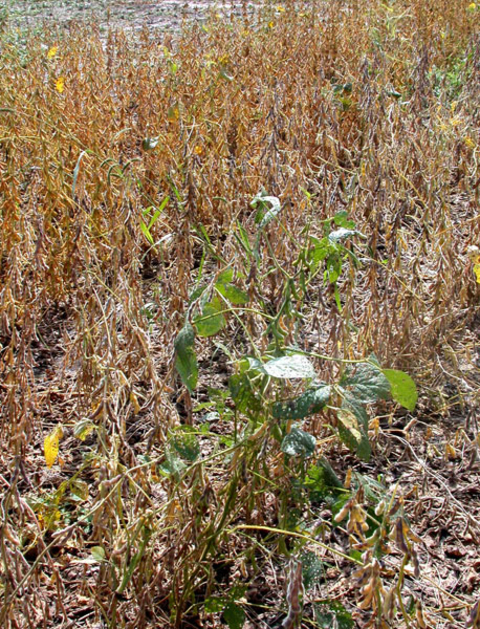Stems of plants remain green after the pods and seeds have ripened and are brown and ready for harvest. Occasionally the stems and leaves remain green after the pods have matured, which is well past the time when the whole plant is normally brown and dry.
Conditions and timing that favor disease
Symptoms are typically first seen as the crop is maturing.
Causal pathogen

These include plant viruses, low soil moisture, potassium deficiency, soybean population density, genetic mutations in soybean plants, and insect damage. Plant viruses, especially bean pod mottle virus (BPMV), were thought to be associated with green stem, but recent research has shown no cause and effect relationship between BPMV infection and green stem. Specific viruses are often not detected in plants with green stem, and plants with specific viruses often don't have green stem.
Disease management
Plant soybean cultivars with relatively low susceptibility to green stem. The incidence and severity of green stem has been reported to vary among cultivars. Specific and proven management strategies are not known due to the uncertain cause of green stem syndrome.
Source : umn.edu